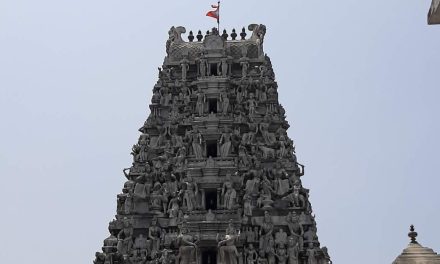The Sanskrit word Darshana, from which the Hindi word darshan is derived, may be translated as “sight,” “vision,” or “appearance.” In Hinduism, the act of gazing at a god, holy person, sacred item, or natural sight, most often in the form of a physical image, is referred to as darshan. The words Samkhya, Yoga, Nyaya, Vaisheshika, Purva Mimamsa, and Vedanta are all included in the list of the six Hindu philosophical schools that are referred to as Darshan.
When discussing a philosophical framework within the setting of Indian traditions, the term Darshana refers to a subject that encompasses a great deal more than philosophy in its conventional meaning. It requires “seeing” or “experience,” and a school of thought or point of view is often conceived as a result of some experience that the proponent of that school has had.
When one is doing darshan, they are just required to stare at a picture of a deity, holy person, or heavenly entity. Nothing more is demanded of them. Simply seeing is enough to bring about a sense of contentment on a spiritual level. Darshan may take place in front of a home altar with a portrait of the god, at a temple or other sacred site, in a vision while meditating, or in any other setting that is considered to be holy.
It is a common belief in Hinduism that the devotee and the god share the same line of sight, which makes the experience of darshan much more meaningful. Samkhya, which in the context of practice means “enumeration,” is the foundation of a significant portion of classical yoga darshan, also known as yoga-darsana.
The primary distinction lies in the fact that yoga presupposes the presence of a “particular Purusha,” or a person who serves as a model for the one who is looking for spiritual freedom.
The practice of yoga darshan focuses largely on the development and maintenance of two distinct states of consciousness: the state of having a single-minded concentration (ekagrata) and the state of having one’s mental activities suppressed (niruddha). In the context of Indian philosophical traditions, the term Darshana refers to a far broader subject than philosophy in the conventional meaning of the word.
It is necessary to “see” or “feel” anything. In this sense, the three non-Vedic philosophies and the six Vedic philosophies that make up the Indian tradition did not originate through idle contemplation or analysis but rather were the product of highly perceptible experiences that were empirical and intuitive in nature.
Darshana may also refer to the process of analysis, which requires a more profound degree of perception on the part of the practitioner. It is impossible to make a direct comparison between Indian philosophy and its Western analog due to the basic distinction that the process of developing a body of thought in India always takes into account the contributors’ individual experiences.
One cannot, however, dismiss these Indian philosophical traditions as containing no philosophy at all, nor should one classify them as belonging to the category of “theology.” Even if these intellectual traditions were founded on experience, some of them did not promote theism or the worship of a godhead. This is the primary reason why this is the case.
Beholding a deity and gaining information about that god is referred to as “Darshana” in Indian philosophy and religion. In Hinduism, Darshana may refer to respected individuals or holy things. Blessings are part of the experience that you will have.
During the rath yatras, in which images of gods are carried through the streets, other people are given the opportunity to enter the temple and have a darshan of the deity. Sages and gurus often provide Darshana to the disciples they have taken under their wing.





